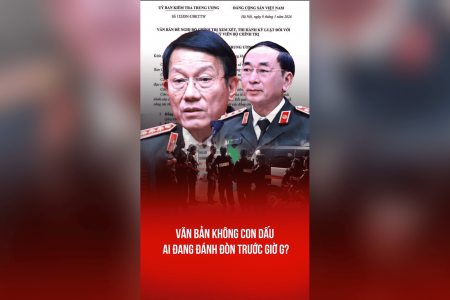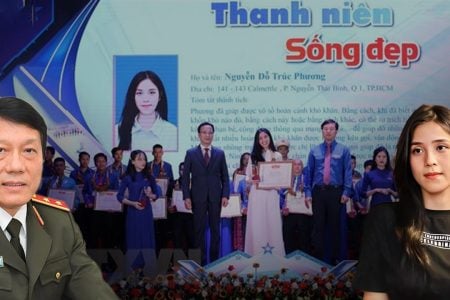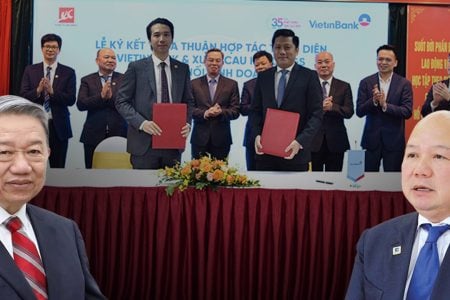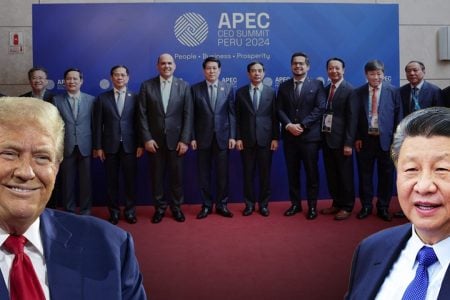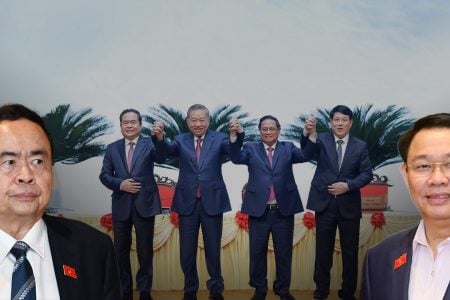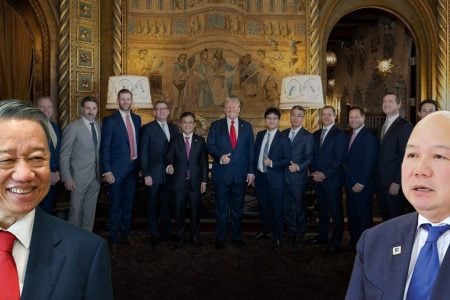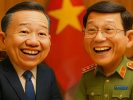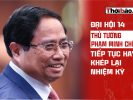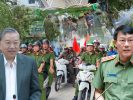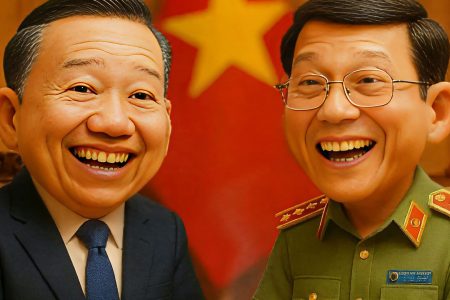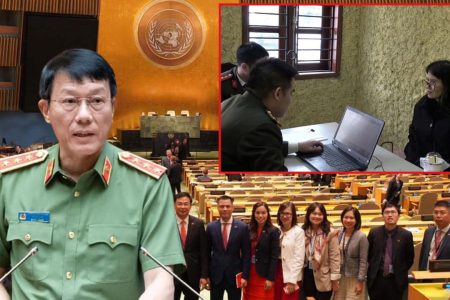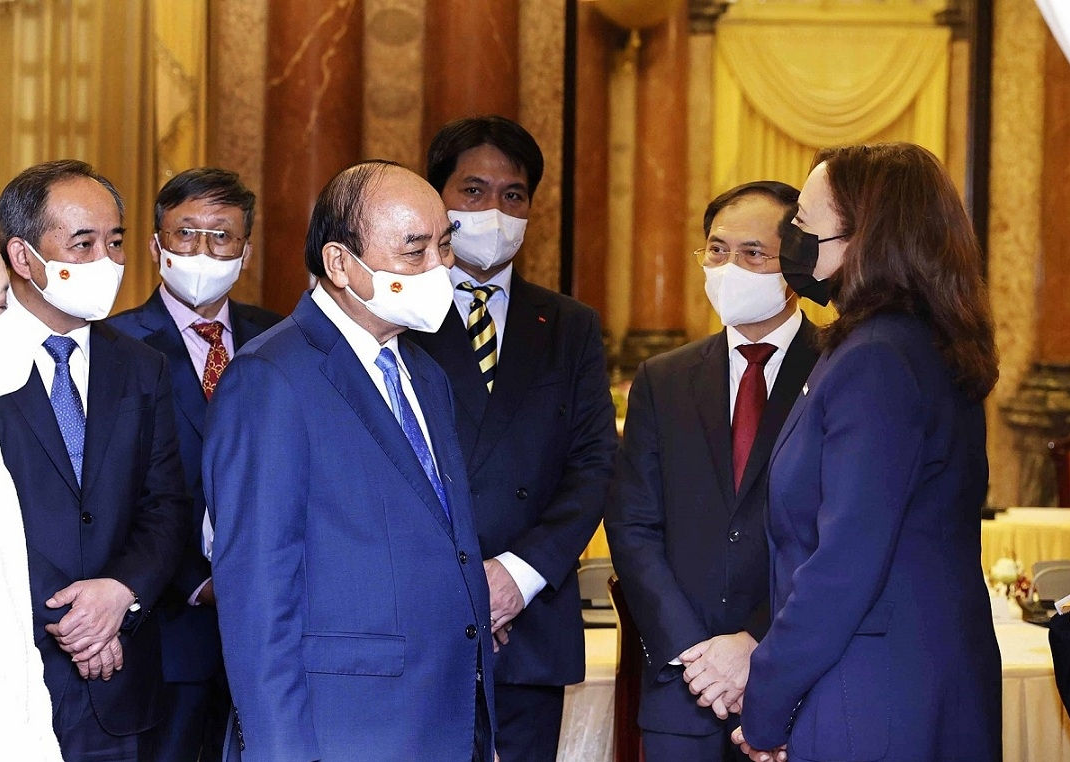
Just about three weeks after the visit to Hanoi by US Vice President Kamala Harris, Chinese Foreign Minister Wang Yi also chose Vietnam to open his tour of four East and Southeast Asian countries. The Vice President of the United States condemned China’s sovereignty claims and coercive actions in the South China Sea (Vietnam calls it the East Sea). As for Mr. Wang Yi, it was as if he forced relevant countries to maintain the status quo in the sea and at the same time resist the intervention actions of outside forces.
Speaking in Hanoi on August 25, 2021, US Vice President Kamala Harris called on Vietnam to jointly „find ways to put pressure, increase pressure … on Beijing to force them to comply with the UN United Nations on the Law of the Sea,” and challenge China’s bullying practices and excessive maritime claims. In addition to the East Sea issue, the United States is willing to increase assistance to Vietnam in defense and fight against the Covid-19 pandemic, the most concrete evidence of America’s goodwill is immediate aid to Vietnam within a short period of time a million doses of Moderna vaccine.
In short, Washington wants to upgrade its relationship with Hanoi, from a „comprehensive partner“ to a „strategic partner.“ Experts say that Vietnam wants to do so, but beware of anger from Beijing. What are the benefits and obstacles for Vietnam if it establishes a strategic partnership with the US? RFI Vietnamese asked a question to researcher Laurent Gédéon, lecturer at Lyon Pedagogical School (ENS), France.
*****
RFI : How can upgrading the „comprehensive partnership“ to a „strategic partnership“ with the US bring Vietnam? What are the political and military obstacles that could impact this upgrade?
Laurent Gédéon: Vietnam has signed strategic partnerships with Russia, Japan, India, China, South Korea, the United Kingdom, Germany, and France. So what should Vietnam look for when signing a strategic partnership agreement?
I think from Hanoi’s point of view, the strategic partnership is of particular importance, first for security, because the agreement enhances Vietnam’s diplomacy and defense, secondly for Vietnam’s diplomacy and defense as well as economic, because a strategic partnership contributes to the development of the country, and for diplomacy, because such an agreement helps Hanoi to get support when it needs foreign policy. From these points, if we look at the case of the United States, it can be seen that the relationship between the two countries may be tightened, but it may also pose some obstacles, even though the US side makes the strong request.
The first obstacle concerns Vietnam’s domestic policy. It can be summarized that in the Communist Party of Vietnam there are many different trends, such as the „pro-China“ tendency, or more or less „in favor of the United States“ without either side giving in to the other. There are also a number of other trends, expressed through various levels of views in Vietnamese policy, with visible results as we know them today. Although Vietnamese leaders agree not to lose sovereignty over the Hoang Sa (Paracels) and the Truong Sa (Spratlys), they disagree on how to act. Some are inclined to deepen ties with the United States. Others refused. Therefore, it can be seen that the first obstacle to this strategic relationship is the domestic policy and the internal political imbalance of Vietnam.
The next barrier is military, related to Vietnam’s long-standing use of Russian weapons. A large part of Vietnam’s weapons systems are manufactured by the Soviet Union or Russia. Vietnam is heavily dependent on Russian military equipment, up to 80%. This raises the issue of compatibility of US-made weapons into the existing system. In addition, there is a legal issue related to the Countering America’s Adversaries Through Sanctions Act (CAATSA) to punish countries that buy Russian weapons. This is a problem that can be solved diplomatically, but still an issue that needs to be raised.
The third obstacle for Vietnam is the level of trust in Washington, which can be seen in recent events, such as the weakening of US strategic commitment under President Trump. Although the Biden administration has changed course, this is nonetheless a precedent that is unlikely to reassure countries that want to move closer to Washington.
RFI: What other obstacles are there ?
Laurent Gédéon: Human rights in Vietnam can be mentioned, which is not so important or not mentioned much under President Trump, but is a sensitive issue for the Biden administration and was once a campaign point of his candidacy.
Next is the uncertainty about the ability of the United States to join the Comprehensive and Progressive Agreement for Trans-Pacific Partnership – CPTTP, which replaces the Trans-Pacific Partnership – TPP. It is unclear at this time whether the US will join this joint agreement, or will develop another bilateral agreement with Vietnam.
Hanoi’s final question about the United States is the case of Afghanistan, where the US military intervened extensively and is now retreating. This happens in a very volatile geo-political context in the region, which can lead to conflict, and makes me think of the geopolitical stability of Taiwan today, to the domino effect from a war crisis in Taiwan to the South China Sea, to the West’s increasing pressure in the region through the increased naval presence of Britain, France, Australia and of course the United States in the South China Sea, in the Taiwan Strait, as well as in many other areas of the region.
To conclude on the possibility of Vietnam entering into a strategic partnership with the United States, it can be said that Hanoi will benefit, certainly in terms of military security, but also risk losing its autonomy strategy. Therefore, it can be seen that the Vietnamese side is cautious in such an agreement.
RFI: In case Vietnam signs a strategic partnership with the US, will this violate Vietnam’s „Four Nos“ principle?
Laurent Gédéon: It is true that Vietnam’s most recent Defense White Paper in 2019 states the „Four Nos“ principle. I repeat, it is “do not join the military alliance; not affiliated with one country to fight the other; prohibit foreign countries from setting up military bases or using Vietnamese territory against other countries” and the fourth “No”, added to the traditional “Three Nos”, which is “not to use force or threaten threat to use force in international relations.”
It is true that the „Four No’s“ principle seems to prevent Hanoi from becoming a party to a conflict, except for a direct attack on Vietnamese territory. But in the 2019 National Defense White Paper, there is also a warning: “Depending on the situation and in specific conditions, Vietnam will consider developing necessary and corresponding defense and military relations with other countries” regardless of their political origin and level of development. It can be seen that for the first time Vietnam has facilitated the interpretation of the „Four Nos“ principle. And this could pave the way for the possibility of closer military cooperation with the United States.
Vietnam is also very attentive to the fact that for the first time, together with South Korea and New Zealand, New Zealand was invited to participate in the QUAD+ conference in March 2020 focusing on the Covid-19 pandemic. It is noteworthy that Vietnam has solid relationships with the Quartet – QUAD countries including Japan, India, the United States and Australia. In particular, Vietnam has strategic relations with three of these four countries, except the US.
It is important to find out here whether Hanoi approaches these countries, indirectly through international cooperation mechanisms rather than directly through military mechanisms. While in fact these international cooperation mechanisms help Vietnam to participate in informal military alliance structures, although it seems to go against the „Four Nos“ principle. This seems to be a deliberate approach by the Vietnamese government.
In addition, it should be known that in a survey at the end of 2019 by the Center for Strategic and International Studies (CSIS), the majority of Vietnamese people polled considered the Quartet – QUAD as an institutional framework. most important in the region, more than ASEAN. This is a remarkable indicator of Hanoi’s ability to participate in these types of coalitions even though they are not officially named, despite what is stated in the White Paper, or the „Four Nos“ principle.
RFI: How many strategic partnerships has the US signed in Asia and how is it different from the alliance with the Philippines?
Laurent Gédéon : The United States has signed many important strategic partnership agreements in the region. I would like to remind a few agreements such as with India, focusing on deterrence and protection of common interests as well as on fighting pandemics and climate change; with Indonesia focusing mainly on the economy and preserving the international order according to the existing rules in the Indo-Pacific; Singapore includes a notable array of military cooperation, with a US naval unit present in a port in the country. In addition, there is also a more comprehensive strategic agreement with ASEAN on public health, connectivity, economic cooperation, and maritime cooperation on the environment.
But what we find is that these strategic partnerships are not treaties of military alliances, but have more or less important military components. For countries that are very close to the United States, Washington establishes military alliances, not strategic partners, as with Japan, South Korea, Taiwan and the Philippines. In the case of Japan, South Korea and the Philippines, Washington has permanent or temporary military forces.
Particularly in the case of the Philippines, the United States has a Visiting Forces Agreement (VFA), a version of the Mutual Defense Treaty signed by Washington and Manila in 1951. The current VFA agreement stipulates the presence of US troops on Philippine territory during exercises, joint training, warships docking, or any activity between the two militaries. This VFA Military Visitation Agreement was renewed by President Rodrigo Duterte on July 30, 2021, while the United States reiterated that it would continue to protect the Philippines in the event of an armed attack in the Philippines in the South China Sea.
The US-Philippines VFA is a military agreement, as opposed to a strategic partnership. However, depending on the wishes and strategies of the two sides, for example in the case of Vietnam and the US, there may be a military side that is tailored to meet the strategic concerns of each side. But it must be recalled that the strategic partnership is not a military alliance as is the case with the US and the Philippines.
RFI Vietnamese would like to thank researcher Laurent Gédéon from the Lyon Pedagogical School (Ecole Normale supérieure de Lyon) in France.
Thoibao.de (Translated)



